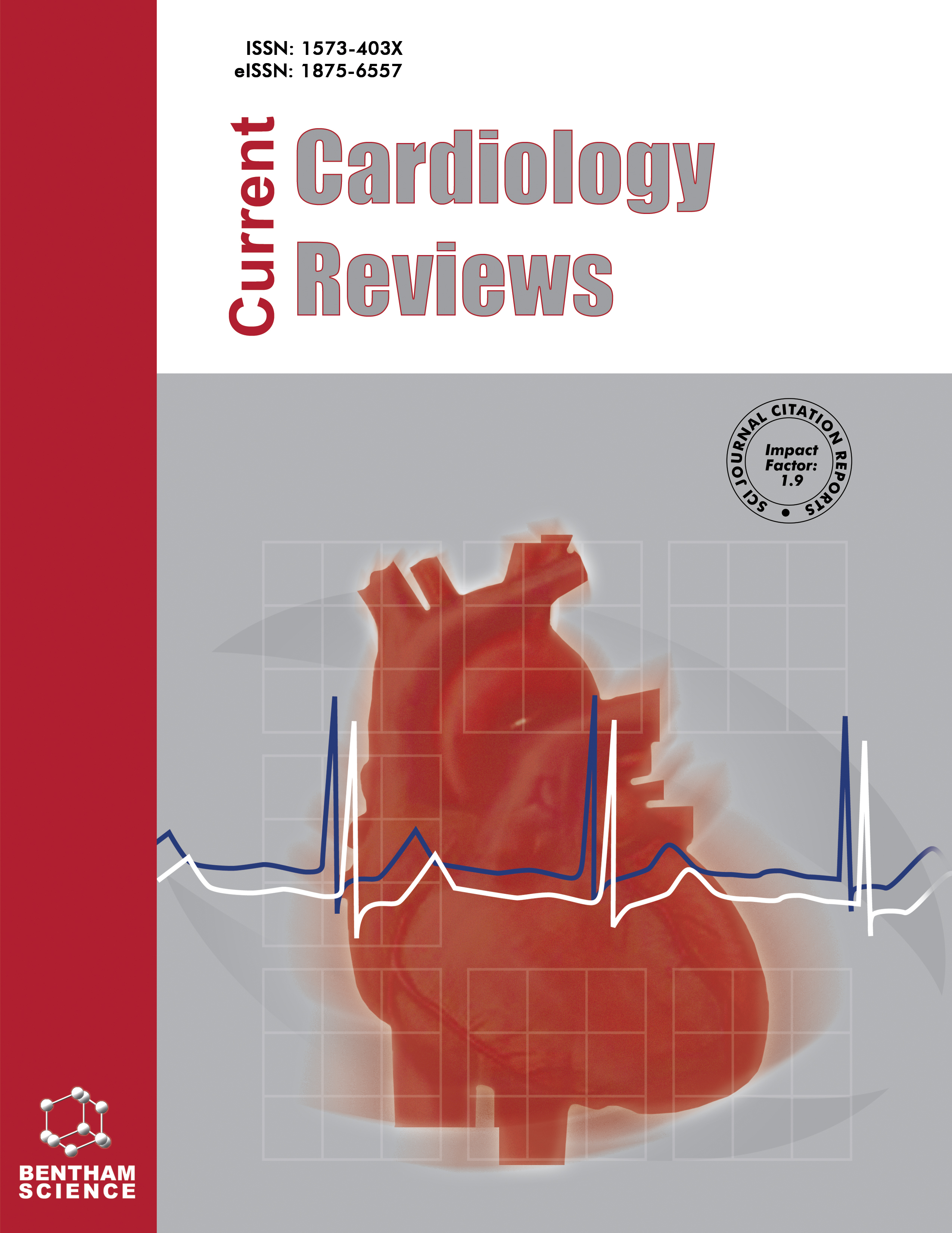- Home
- A-Z Publications
- Current Cardiology Reviews
- Previous Issues
- Volume 12, Issue 2, 2016
Current Cardiology Reviews - Volume 12, Issue 2, 2016
Volume 12, Issue 2, 2016
-
-
Clinical Characteristics and Treatment of Cardiomyopathies in Children
More LessAuthors: Jack F. Price, Aamir Jeewa and Susan W. DenfieldCardiomyopathies are diseases of the heart muscle, a term introduced in 1957 to identify a group of myocardial diseases not attributable to coronary artery disease. The definition has since been modified to refer to structural and or functional abnormalities of the myocardium where other known causes of myocardial dysfunction, such as systemic hypertension, valvular disease and ischemic heart disease, have been Read More
-
-
-
The Pathophysiology of Heart Failure in Children: The Basics
More LessAuthors: Jarrod D. Knudson and Antonio G. CabreraFew data exist on the pathophysiologic changes in pediatric heart failure. Most of the knowledge has evolved from animal models of ischemic or idiopathic dilated cardiomyopathy. This review addresses the pathophysiologic changes that occur in the failing heart from animal models and the adult experience to unique aspects of heart failure in children.
-
-
-
Cardiopulmonary Interactions in Children with Heart Failure
More LessCardiopulmonary interactions are present but inconsequential in humans with normal cardiac and respiratory function; however, in the presence of significant impairment in either system, the importance of the interplay between cardiovascular and pulmonary systems cannot be overstated. This review will discuss the physiologic underpinnings and consequences of these interactions in patients with heart failure.
-
-
-
Management of the Low Cardiac Output Syndrome Following Surgery for Congenital Heart Disease
More LessAuthors: Heather K. Chandler and Roxanne KirschThe purpose of this review is to discuss the management of the low cardiac output syndrome (LCOS) following surgery for congenital heart disease. The LCOS is a well-recognized, frequent post-operative complication with an accepted collection of hemodynamic and physiologic aberrations. Approximately 25% of children experience a decrease in cardiac index of less than 2 L/min/m2 within 6-18 hours after cardiac surgery. P Read More
-
-
-
Hemodynamic Monitoring in the Acute Management of Pediatric Heart Failure
More LessAuthors: Rocky Tsang, Paul Checchia and Ronald A BronickiOne of the basic tenets of cardiac critical care is to ensure adequate tissue oxygenation. As with other critical illness such as trauma and acute myocardial infarction studies have demonstrated that making the right diagnosis at the right time improves outcomes. The same is true for the management of patients at risk for or in a state of shock. In order to optimize outcomes an accurate and timely assessment of cardiac f Read More
-
-
-
Pharmacologic Approach to Heart Failure in Children
More LessAuthors: Sebastian C. Tume, Jason Goldberg, Silvana Molossi and Ronald A. BronickiHeart failure may result from a wide variety of causes and present with varying degrees of severity. In large part patients present with varying degrees of congestion and compromised cardiac output. In this review a pathophysiologic construct is provided to guide the pharmacologic management of acute heart failure that leads to decreased congestion and improved cardiac output. Pharmacologic therapies that are Read More
-
-
-
Acute Kidney Injury in Pediatric Heart Failure
More LessAuthors: Alyssa Riley, Daniel J. Gebhard and Ayse Akcan-ArikanAcute kidney injury (AKI) is very common in pediatric medical and surgical cardiac patients. Not only is it an independent risk factor for increased morbidity and mortality in the short run, but repeated episodes of AKI lead to chronic kidney disease (CKD) especially in the most vulnerable hosts with multiple risk factors, such as heart transplant recipients. The cardiorenal syndrome, a term coined to emphasize the bidirectional n Read More
-
-
-
Mechanical Circulatory Support in Children
More LessAuthors: Iki Adachi and Robert D.B. JaquissThe field of pediatric mechanical circulatory support has undergone a significant evolution with the advent of devices designed for children and the implementation of new strategies for deployment. With the ongoing shortage of organs the demand for new devices specifically designed for children will only increase. This review discusses the evolution of mechanical circulatory support, available devices, and the implementat Read More
-
-
-
Drug-induced Inhibition and Trafficking Disruption of ion Channels: Pathogenesis of QT Abnormalities and Drug-induced Fatal Arrhythmias
More LessRisk of severe and fatal ventricular arrhythmias, presenting as Torsade de Pointes (TdP), is increased in congenital and acquired forms of long QT syndromes (LQTS). Drug-induced inhibition of K+ currents, IKs, IKr, IK1, and/or Ito, delay repolarization, prolong QT, and increase the risk of TdP. Drug-induced interference with IKr is the most common cause of acquired LQTS/TdP. Multiple drugs bind to KNCH2-hERG-K+ channels a Read More
-
-
-
Diagnostic Cardiac Catheterization in the Pediatric Population
More LessAlthough the utility of diagnostic cardiac catheterization in the clinical setting has diminished over the last years, due to the emergence of noninvasive imaging modalities, such as echocardiography, magnetic resonance imaging and computed tomography, catheterization for diagnostic reasons still constitutes a valuable tool in certain parts in the workup of pediatric heart disease. As a result, awareness of the main aspe Read More
-
Volumes & issues
-
Volume 21 (2025)
-
Volume 20 (2024)
-
Volume 19 (2023)
-
Volume 18 (2022)
-
Volume 17 (2021)
-
Volume 16 (2020)
-
Volume 15 (2019)
-
Volume 14 (2018)
-
Volume 13 (2017)
-
Volume 12 (2016)
-
Volume 11 (2015)
-
Volume 10 (2014)
-
Volume 9 (2013)
-
Volume 8 (2012)
-
Volume 7 (2011)
-
Volume 6 (2010)
-
Volume 5 (2009)
-
Volume 4 (2008)
-
Volume 3 (2007)
-
Volume 2 (2006)
-
Volume 1 (2005)
Most Read This Month
Article
content/journals/ccr
Journal
10
5
false
en


